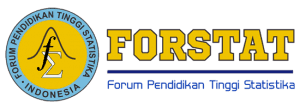MARKOV CHAIN ANALYSIS FOR PREDICTION OF MONTHLY AVERAGE TEMPERATURE PATTERNS AT PATTIMURA METEOROLOGICAL STATION AMBON 2015 - 2024
Abstract
Weather has a significant impact on human activities, making accurate weather forecasting an important necessity. This study aims to analyze the patterns of climate element changes at the Pattimura Ambon Meteorological Station using the Markov Chain approach to identify climate transition patterns, estimate steady-state time, and predict the climate in 2025. Monthly secondary climate element data for the period 2015-2024 were obtained from the Maluku Province BPS, categorized into three conditions: cold (<25°C), normal (25°C-26.5°C), and hot (>26.5°C). The data were analyzed using the Markov Chain method with calculations of the transition probability matrix, matrix convergence, and steady-state distribution. The research results indicate that the system reaches equilibrium after 47 periods with a long-term distribution: cold condition 2.85%, normal 35.66%, and hot 61.76%. The hot condition has the highest stability with a probability of remaining in the same state at 91.8%. The 2025 prediction indicates that monthly temperature probabilities gradually move toward the steady-state distribution, illustrating the dominance and persistence of hot conditions in the long term. The analysis results provide important implications for agricultural planning, tourism, infrastructure, and disaster mitigation in the city of Ambon in the face of climate change.
Downloads
Copyright (c) 2025 VARIANCE: Journal of Statistics and Its Applications

This work is licensed under a Creative Commons Attribution-NonCommercial-ShareAlike 4.0 International License.



 Editorial Team
Editorial Team
 Peer Review Process
Peer Review Process Focus & Scope
Focus & Scope Open Acces Policy
Open Acces Policy Privacy Statement
Privacy Statement Author Guidelines
Author Guidelines Publication Ethics
Publication Ethics Publication Fees
Publication Fees Copyrigth Notice
Copyrigth Notice Plagiarism Screening
Plagiarism Screening Digital Archiving
Digital Archiving





